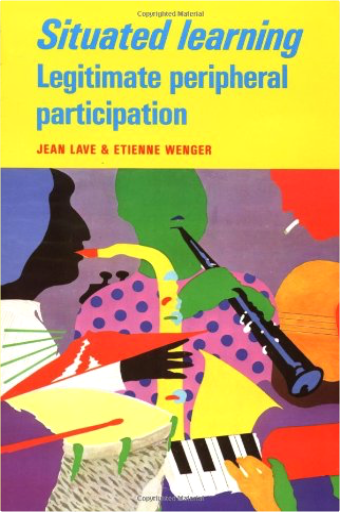
Lateral Thinking: Creativity Step by Step
Also available on Amazon
The first practical explanation of how creativity works, this results-oriented bestseller trains listeners to move beyond a "vertical" mode of thought to tap the potential of lateral thinking.

Educating the Entire Person
Also available on Amazon
This book maintains that much of what children and adolescents are taught in school is of limited use to them in succeeding in life. It notes that although most school curricula focus on factual knowledge and cultural enrichment, they fall short in providing students with an education that focuses on individual abilities and inclinations, financial self-sufficiency, moral development, and self-identity. The book advocates a teaching and learning philosophy that makes students largely responsible for their own education and development so that they can function as independent, self-sufficient adults in society. Its central premise is that students need to learn to think for themselves, develop a worthwhile concept of the meaning of life, and learn to maneuver well in their environment.

Embracing Contraries: Explorations in Learning and Teaching
Also available on Amazon
Elbow explores the "contraries" in the educational process, in particular his theory that clear thinking can be enhanced by inviting indecision, incoherence, and paradoxical thinking. The essays, written over a period of twenty-five years, are engaged in a single enterprise: to arrive at insights or conclusions about learning and teaching while still doing justice to the "rich messiness" of intellectual inquiry. Drawing his conclusions from his own perplexities as a student and as a teacher, Elbow discusses the value of interdisciplinary teaching, his theory of "cooking" (an interaction of conflicting ideas), the authority relationship in teaching and the value of specifying learning objectives. A full section is devoted to evaluation and feedback, both of students and faculty. Finally, Elbow focuses on the need to move beyond the skepticism of critical thinking to what he calls "methodological belief"--an ability to embrace more than one point of view.

Pedagogy of Freedom: Ethics, Democracy, and Civic Courage
Also available on Amazon
This book displays the striking creativity and profound insight that characterized Freire's work to the very end of his life-an uplifting and provocative exploration not only for educators, but also for all that learn and live.

Discourse, Learning, and Schooling
Also available on Amazon
Discourse, Learning, and Schooling explores theoretical and methodological relationships between childrens' discourse--or socially used language--and their learning in educational settings. Authors in this volume address a range of issues, including literacy, authorship, the construction of self, and classroom interaction. The chapters range from research studies of classroom discourse to essays reflecting on discourse and literacies. Collectively these chapters reflect both sociocognitive perspectives on relations among discourse, learning, and schooling, and sociocultural perspectives on discourse and literacies among diverse cultural groups.

How Children Learn
Also available on Amazon
This enduring classic of educational thought offers teachers and parents deep, original insight into the nature of early learning. John Holt was the first to make clear that, for small children, learning is as natural as breathing.” In this delightful yet profound book, he looks at how we learn to talk, to read, to count, and to reason, and how we can nurture and encourage these natural abilities in our children.”

Teaching Problems and the Problems of Teaching
Also available on Amazon
In this study, an experienced classroom teacher takes us into her fifth-grade maths class through the course of a year and shows how classroom dynamics - the complex relationship of teacher, student and content - are critical in improving student performance. Magdalene Lampert offers an original model of teaching practice that casts new light on the ways teachers can successfully deal with teaching problems.

Situated Learning: Legitimate Peripheral Participation
Also available on Amazon
In this important theoretical treatise, Jean Lave, anthropologist, and Etienne Wenger, computer scientist, push forward the notion of situated learning--that learning is fundamentally a social process and not solely in the learner's head. The authors maintain that learning viewed as situated activity has as its central defining characteristic a process they call legitimate peripheral participation. Learners participate in communities of practitioners, moving toward full participation in the sociocultural practices of a community. Legitimate peripheral participation provides a way to speak about crucial relations between newcomers and old timers and about their activities, identities, artifacts, knowledge and practice. The communities discussed in the book are midwives, tailors, quartermasters, butchers, and recovering alcoholics, however, the process by which participants in those communities learn can be generalized to other social groups.

Distributed Cognitions: Psychological and Educational Considerations
Also available on Amazon
Traditionally, human cognition has been seen and studied as existing solely "inside" a person, irrelevant to the social, physical, and artifactual context in which cognition takes place. This book reexamines the nature of cognition and proposes that a clearer understanding of human cognition would be achieved if it were conceptualized and studied as distributed among individuals; knowledge is socially constructed through collaborative efforts toward shared objectives within cultural surroundings, and that information is processed among individuals and the tools and artifacts provided by culture. The contributors to this thought-provoking text enhance their arguments by offering examples from daily life and educational activities. Researchers in a number of social and scientific fields will welcome this book.

Thought and Language
Also available on Amazon
Since it was introduced to the English-speaking world in 1962, Lev Vygotsky's Thought and Language has become recognized as a classic foundational work of cognitive science. Its 1962 English translation must certainly be considered one of the most important and influential books ever published by the MIT Press. In this highly original exploration of human mental development, Vygotsky analyzes the relationship between words and consciousness, arguing that speech is social in its origins and that only as children develop does it become internalized verbal thought. In 1986, the MIT Press published a new edition of the original translation by Eugenia Hanfmann and Gertrude Vakar, edited by Vygotsky scholar Alex Kozulin, that restored the work's complete text and added materials to help readers better understand Vygotsky's thought. Kozulin also contributed an introductory essay that offered new insight into Vygotsky's life, intellectual milieu, and research methods. This expanded edition offers Vygotsky's text, Kozulin's essay, a subject index, and a new foreword by Kozulin that maps the ever-growing influence of Vygotsky's ideas.










